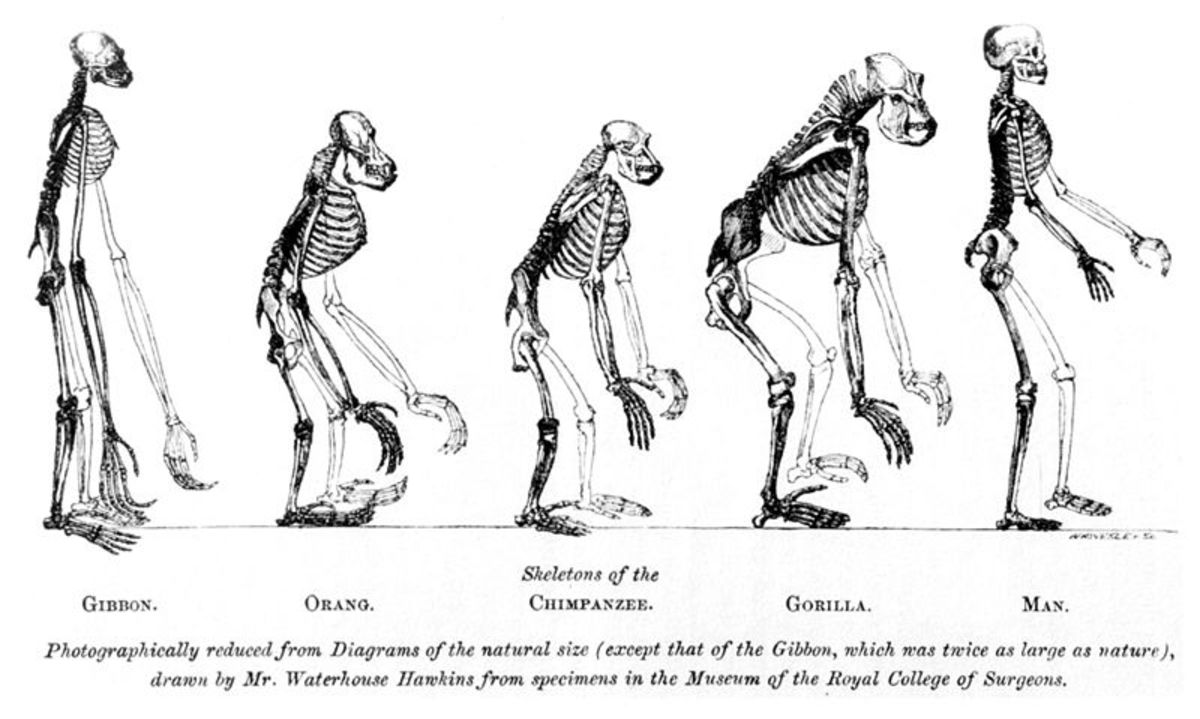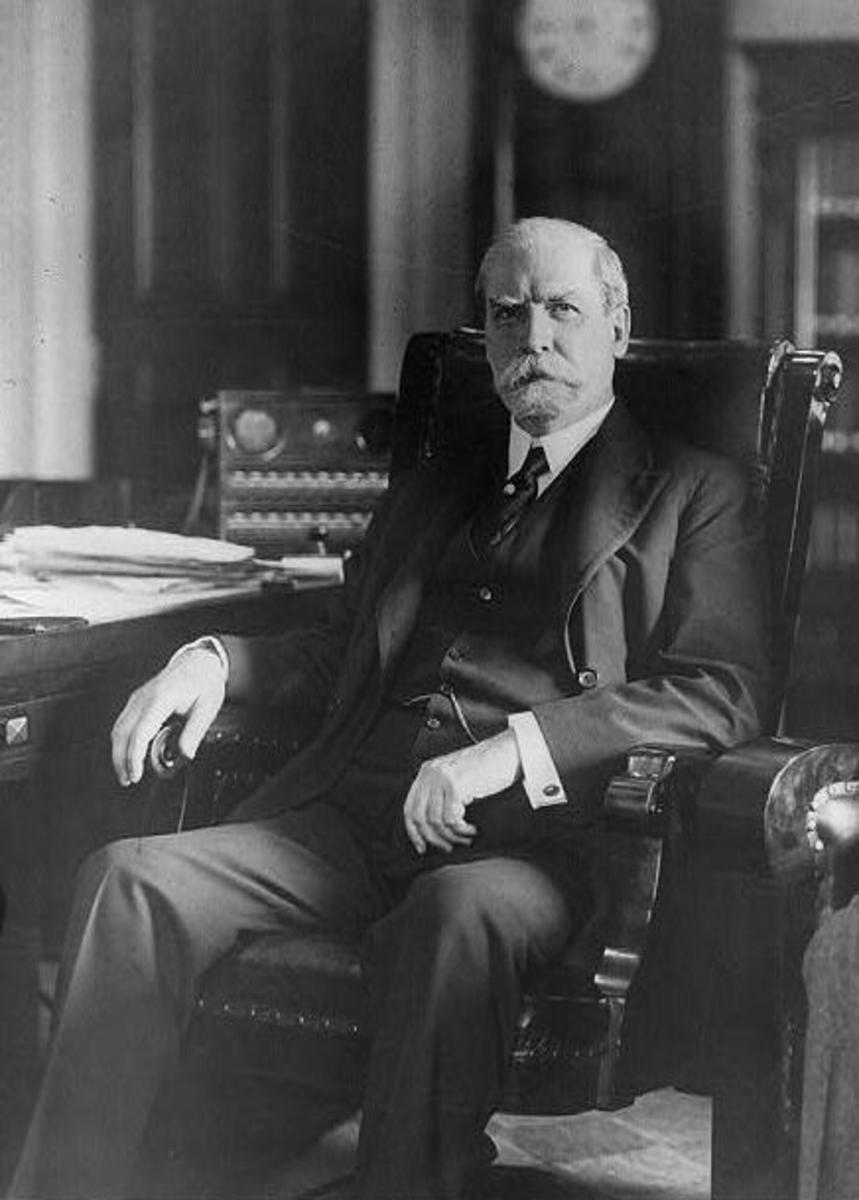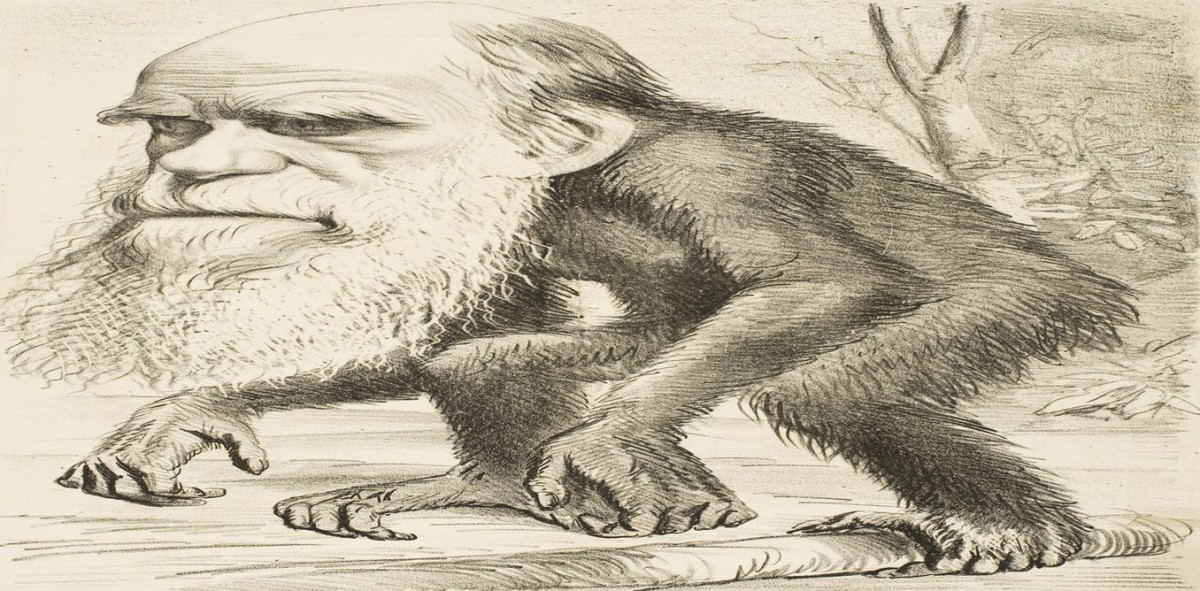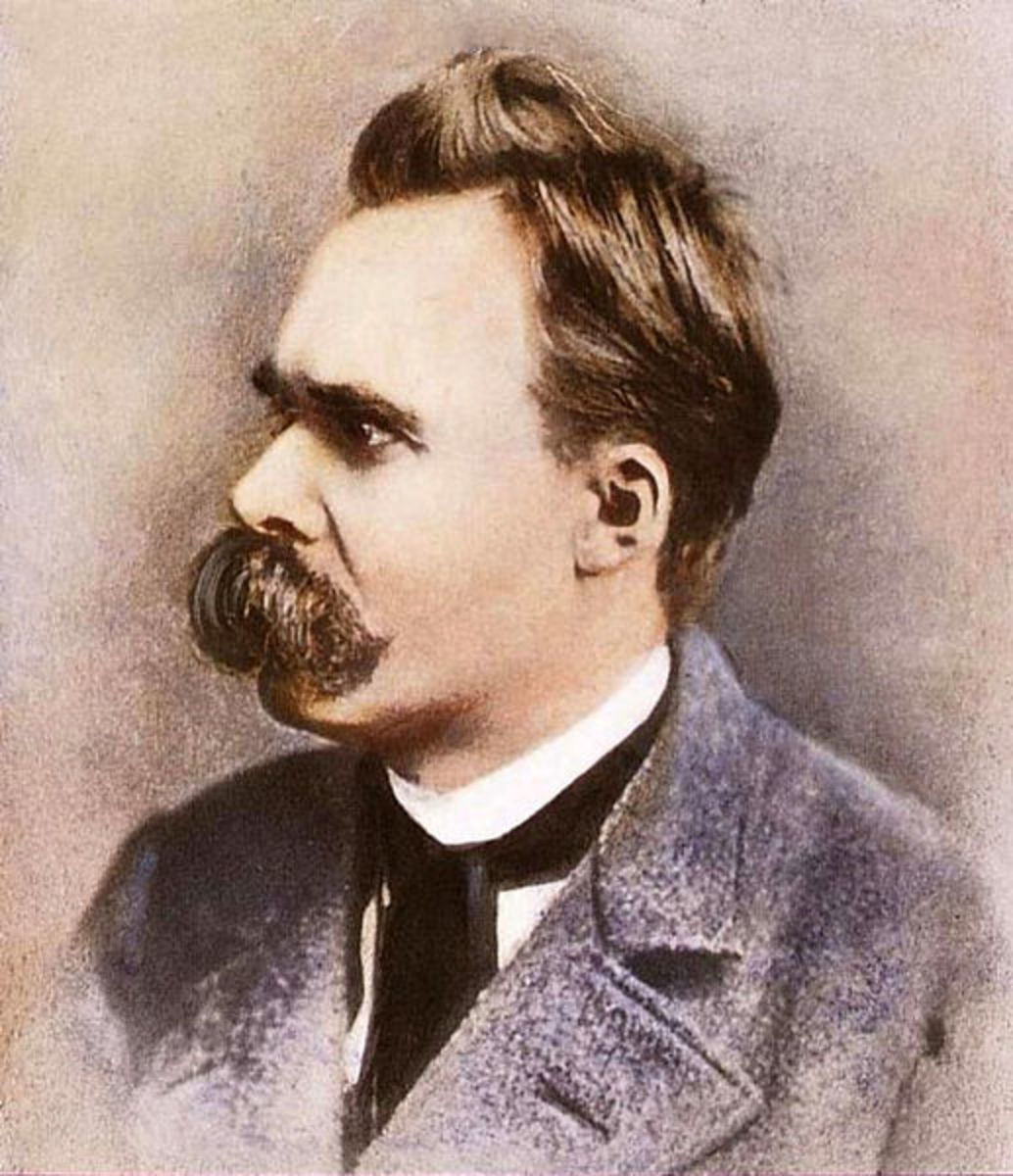The Creation of Humanity, Part 1
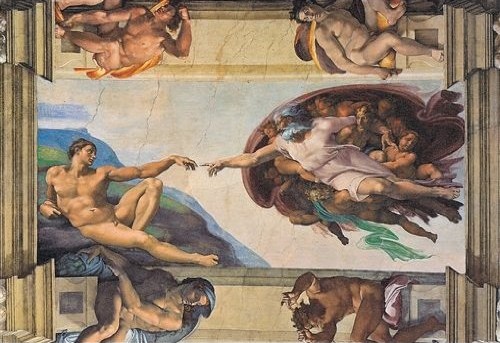
This hub begins a two-part abstract of an as-yet unwritten book.
PROLOGUE
Ideas, such as those presented here, are imaginary creations...
Human imagination is strong medicine. The mythology that motivated the development of western civilization is imaginary. But witness its power: for better or worse, it has transformed the world.
One of my touchstone memories is of sitting at a desk in high school, with sharpened #2 pencils at the ready, waiting to take the SATs (Standardized Aptitude Tests). A friend at the desk next to me was going on about the unreality of the situation; I recall him saying that “this is all an illusion!” I interpreted this as drug-induced babble; this was the mid-1970s, and my friend was experienced. I was not, but I got his gist; and my experience in the decades since has only reinforced that feeling. I, like many others of my generation, resonated strongly with The Matrix. Your reality depends on which pill you swallow.
This is my stab at filling the mythological void left in Darwin’s wake. I am a scientist, and I love science: without it we are clueless, at the mercy of the overwhelming human predilection for superstition. But while science helps us come to grips with the objective reality of nature, it is inherently blind to the subjective nature of reality. And that subjective aspect turns out to be the font of creation.
In focusing on the objective and bringing to light (and to some extent explaining) countless empirical facts—like the fact of evolution—science has done a bang-up job of undermining literal interpretations of the ancient mythologies that infuse human existence with meaning. But, beyond the wonders and power of new knowledge and technology, it offers little in return. And so those of us who are inclined to wonder are left wondering: what’s the point? Is it to dominate nature? Admittedly, we’re pretty good engineers; but looking around at the state of things, dominating nature seems to me a fool’s errand. Or is the point simply to slack curiosity’s thirst: to learn for the sake of learning? That works for many of us who live in the ivory tower of academia. But we academics are (and always will be) a small minority who, whatever sales-pitches we may use to justify our existence, are mostly in it for our own amusement. By extension, one might surmise that the point of civilized (i.e. economically privileged) existence is simply to amuse ourselves, which for many apparently means growing old and fat in front of that quintessential fruit of science and technology, the television.
So (with a nod to Freddie Mercury) is life a Bohemian Rhapsody in which “nothing really matters”? If not, what does matter, and why? Can human existence have any meaning without an abiding faith in the literal truth of millenia-old creation stories that science has shown are not literally true?
A century and a half after publication of Darwin’s masterpiece it is remarkable how many people (including many intelligent folks who should know better) still refuse to acknowledge their animal ancestry. I believe it is because western culture—and the powers-that-be that drove its growth while reaping its benefits—had a lot invested in the creation myth that Darwin demolished. And in one way or another we cling to the remnants of that mythology, which continue to lend meaning, however frayed, to our imaginary reality of dominion over nature. The bliss of ignorance is a strong attractor.
Still, it distresses me when people with two good eyes cannot see what is directly in front of them. So, creationists (among many others whose heads are planted firmly in the sand) annoy me, particularly when they use sophistry and political bully tactics to reinforce their willfully ignorant bliss. But their motivation is understandable: they are just trying to quell the existential angst flowing from the gaping mythological wound that Darwin opened by publishing The Origin of Species. Healing that wound requires a new, scientifically credible creation myth that gives meaning to our shared experience of life and death. In this hub I hope to plant the seed of such a myth: a subjective flipside to the objective reality uncovered by Darwin.
INTRODUCTION
On Creation and the Duality of Existence: a Matter of Development and Semantics
(1) The paradox of existence is this: nothing comes from nothing—and yet, for any thing that exists, there was a time when that particular thing did not exist. This problem of creation remains a black box in post-Darwinian evolutionary theory, which attributes biological change entirely to “chance and necessity”, i.e., random variation that is subsequently sculpted by natural selection. Within this paradigm, chance (random variation) can be rationalized as an inevitable consequence of the Second Law of Thermodynamics, whereas necessity (natural selection) is attributed to competition for limited resources. This raises two questions: Why is there a Second Law? And, why do limited resources necessitate competition? The problem is implicit in the subtitle of Darwin’s On the Origin of Species by Means of Natural Selection: The Preservation of Favoured Races in the Struggle for Life. While Darwin’s theory reasonably accounts for why some ‘races’ come to be favored over (are better fit to their circumstances than) others, it does not (attempt to) explain why there is a struggle for life in the first place. A struggle for anything implies purpose, or Final Cause, the answer sought by the question why? The Big Question that we all begin asking at an early age is: why do I exist? Invoking natural selection as the originator of species does not answer that particular question (addressing how rather than why), which is why the concept of evolution, divorced from the meaningful context provided by a creation myth, promotes existential angst.
If we commit to the premise that nothing comes from nothing, then logically we must conclude that the state of nothingness from which something is created is itself actually something. What it is is simply not yet defined. Creation then becomes a process of definition, i.e., specification , which is a problem of both development and semantics. Since creation entails development, it occurs within a trajectory of change that increases determinacy, i.e. a process of maturation . Since creation entails definition, our understanding and discussion of it cannot be dissociated from the subjectivity of interpretation inherent in any observational framework. It is therefore inherently an internalist (and hence in our case humanist) endeavor. Moreover, since any instance of creation cannot be defined (or predicted) a priori, it is inherently both mysterious and miraculous. Nevertheless, it can be approached rationally, and science can be used to better understand the circumstances that afford its occurrence.
(2) Material existence as we know it is asymmetric: something (+, 1, yin, white, or life) logically entails nothing (-, 0, yang, black, or death), and vice versa. The creation of anything therefore requires the breaking of symmetry. Such duality (i.e. binary asymmetry—1 and 0—having only one degree of freedom, like a particle) is the irreducible foundation for material existence. The state of nothingness can then be taken to signify two different but practically indistinguishable conditions: either absolute non-existence (0, as entailed by the existence of 1), or existence in an undefined (unrecognizable, vague or incipient) form (neither 0 nor 1, like a wave function or field of potential).
(3) Asymmetry manifests selection (choice), a commitment that resolves the indeterminate tension (uncertainty) generated by co-occurrence of opposing tendencies within a vague (unspecified) primordium. Through the agency of selection uncertainty (i.e. degrees of freedom or vagueness) is decreased, producing information. When this happens one of multiple possibilities is actualized at the expense of others—that is, a “wave function” of potentiality collapses to produce a definitive “particle” of actuality.
(4) Existential asymmetry elicits the emergence of new primordia (fields of potential or “waves”) that develop (resolve, collapse) into new asymmetries (“particles”). Development is thus re-iteratively dialectical (thesis ↔ antithesis → synthesis → new thesis ↔ new antithesis → new synthesis), with each emergent synthesis providing a platform for new creative polarizations. Change entails development of complex systems via successive rounds of symmetry breaking, each round involving initiation (breaking of symmetry) followed by autocatalytic amplification and maintenance of the newly created thing (positive feedback).
(5) Within a complex system, creative potential (potential for synthesis) requires a protected niche that feeds (sustains) the primordium. Such leisure affords maintenance of the undefined field of potential (uncertain metastability or dynamic tension: the vague nothingness that constitutes the “wave function”) generated by co-existence of polar opposites within the same system (something that is not yet anything).
(6) Development is semantically modeled by a specification hierarchy*, which decomposes into the dualistic form: {Generic {Specific }} (which can also be expressed as {Vague {Definite }} or {Implicit {Explicit }}). This form be can mapped to {(Possible) {(Actual)}} or {(wave) {(particle)}}, which develop over time by {(Initiation)→{(Positive Feedback)}} or {(Incipience)→{(Maintenance)}} (here the parentheses are used to indicate a developmental process or condition inhering at each level of the binary hierarchy). Such mappings can be used to resolve perennial ontological problems such as {(Nurture) {(Nature)}}, {(Mutuality) {(Competition)}}, and {(Egg) {(Chicken)}}.
In a specification hierarchy each higher (more specified) level represents both a bifurcation (binary choice, commitment to a specific fate) and a creation or emergence . For any given system, the next higher level of a specification hierarchy is what Stuart Kauffman has referred to as the “adjacent possible”. Lower (less specified) levels are both developmentally (and hence ontologically) prior to, and logically implied by, the higher levels. All specification hierarchies manifest the tree form, with each branch point representing a {Generic {Specific }} bifurcation. Note also that a specification hierarchy is an idealization that does not actually exist. For example, in {mammal{dog}} neither “mammal” nor “dog” refers to anything that exists in any material way that is not more specifically defined (although presumably there was a single mammalian species that was ancestral to all extant mammals, and before that mammal-like reptiles that represented incipient forms of mammal)—every genus is represented by at least one species, and every species has myriad individuated (more specifically defined) representatives. This reflects the fact that creation entails definition: every created thing is a specific something (often, but not always, within some broader generic class; the singular exceptions may not be recognizable however). The specification hierarchy is thus a tool for focusing the semantic issue posed by creation.
(7) Each level of specification manifests teleology by way of development; that is, each level in a specification hierarchy is its own final (developed) cause. This logic (i.e., teleology) is naturally circular, reflecting its developmental emergence via cybernetic causality (positive feedback). Human consciousness develops its own final cause (in the form of cultural mythology) via language-based learning and discourse. Other forms of {consciousness} (i.e. sentience; as in {sentience{human consciousness}}) may exist, but they are different, in that they have their own unique attributes (as in {mammal{human}} vs. {mammal{dog}}. In other words, every life form creates its own meaning, and exists for its own purposes.
For material systems the most generic final cause (i.e., that which is implicit in the science-based culture of modern civilization) is the Second Law of Thermodynamics, which requires the dissipation of energy gradients, and thus explains life in terms of energy flowing from the sun as well as geothermal sources. Thus we have {dissipation {life}}.
*Salthe, S.N. Development and Evolution: Complexity and Change in Biology. 1993, MIT Press.
PURPOSE
When she was about 4 years old, my daughter asked me: "Dad, why are we here?" At the time the only answer I could come up with was something to the effect of “you know, that’s a really good question....” The purpose of this hub is to attempt an answer, based on what I have learned through reading and experience—in other words to articulate my current interpretation of human existence.
I define the concept of purpose (intent, or reason for being) by way of the specification hierarchy {Attention{Intention}}. My thesis is that what we intend depends on what we attend to. What we attend to in turn depends on what we want, and more fundamentally, what we need. Defining what we need addresses the following question: what drives us? Or put another way: why do we strive?
Purpose can also be defined as {Function{Purpose}}; that is, the purpose of something is a more highly specified manifestation of function that it fulfills within a larger system. Function is a central concept in biology. In an organism, the function of a lower-level component (molecule, cell, or organ) is the specialized task carried out by that component, which is required for the survival or well-being of the higher-level organism. In an ecosystem, the function of a lower-level organism is related to its ecological niche within the higher-level trophic network. By manifesting specialization, function manifests development, i.e., is itself a definitive realization of a vaguer tendency.
Purpose is equivalent to Aristotelian final cause, the ultimate reason for something’s existence. From the above we see that purpose is a more highly defined (i.e. developed) manifestation of function. Therefore, the purpose of something can only be articulated by that thing from an internalist perspective, although from an externalist perspective it can be related more generically to the function that the thing fulfills within a larger (eco)system. Since we are all manifestations of energy flux (largely from the sun), the most generic tendency underlying our purposeful existence is to carry out the mandate of the Second Law of thermodynamics—that is, to dissipate energy gradients (e.g., as animals by eating and eventually being eaten). How we define that tendency in terms of our own intentions is up to us, and since we are social animals, largely dependent on our cultural development.
I conclude that humanity is its own final cause; human purpose is therefore defined by humanity itself. This leaves us with the questions: What do we want to do with ourselves—what are our choices, which do we want to make, and why? And, what gives our purposeful existence meaning?
MEANING
We are all ‘hard-wired’ to assign meaning to experience—that is, to interpret that which we perceive—owing to the fact that we are animals, and hence dependent on semiosis for our survival. In biology, existence (survival) entails the ability to perceive and use signs to find sustenance and avoid danger. Superstition is an overdeveloped (human) manifestation of this natural tendency, which is linked to our unique consciousness.
Consciousness (as we know it) is a uniquely human character based on metaphorical use of language, which allows us to reflect on, and thence rationalize, our unconsciously motivated actions (the innate animal behaviors by which we are largely driven). This amounts to higher order interpretation, i.e., interpretation of an interpretation (mapping to the hierarchy {animal{human}}). This perspective resonates with Julian Jaynes’s theory that consciousness is a relatively recent human development (about 3,000 years old), whose antecedent was a pre-conscious, bicameral mind that, owing to hemispheric separation of the speech generation (vocalization) and comprehension (auditory) centers of the brain, literally heard motivating thoughts as external voices (from whence came the perception of an external deity, recorded in ancient religious texts that remain with us to this day). Schizophrenia (in which thoughts are literally heard as voices) is a modern throwback to this pre-conscious human condition, which developed into consciousness by way of metaphorical language.
Any given conscious interpretation may or may not have anything to do with the events or activities that produced the experience that is being interpreted. In other words, what we take to be the meaning of something may or may not have anything to do with that thing.
Science is a systematic means of determining how well a given conscious interpretation works as explanation for what we experience. Hence, science filters meaning. It also synthetically constructs meaning via logical chains of implication (deduction and induction). But science only deals with what definitively exists (is developed), not that which is internally incipient—the source of creation. Therefore much of what we experience cannot be scientifically rendered into a meaningful interpretation. That is why we need art and the other humanities.
Ultimately, consciously perceived meaning is constructed via a culturally developed system of interpretation, i.e. via mythology, through which we obtain our sense of value.
VALUE
What do you value? And why? What, in general, determines the value of anything? Is there such a thing as intrinsic value? For that matter, is value at all objective? If it is not, how does capitalism—where monetary value is said to be objectively determined by the ‘law of supply and demand’—work?
There does appear to be an intimate connection between value and demand or need. In other words, the intrinsic value of something is determined by how much that thing is needed. Value is thus connected to both purpose and meaning: the more valuable something is, the more important the purpose it fulfills, and the more meaningful it is likely to be.
One might thus surmise that work would be rewarded monetarily in a way that is proportionate to its value. If one assumes that this is indeed the case, one must conclude that occupations that receive relatively low monetary compensation—farmers, teachers and nurses for example—are less valuable than occupations that are highly compensated, say CEOs, politicians and celebrities. Of course, what this really means is that we—as a culture and society—simply value the latter more than we do the former. Given that we would not survive very long without farmers, teachers, and nurses, this seems a bit odd, and one has to wonder why it is the case. Might it simply manifest what psychologists call group process: a situation where we consumers demand what the suppliers are selling simply because we are sheep and they (through their psychologically savvy marketing skills) are the shepherds?
It thus appears that value is subjective and depends (like everything else) on context. If there is such a thing such as intrinsic value, it is only part, and perhaps a very small part, of what determines economic value. It is clear that values depend on mythological context, and vary between cultures. One man’s trash is another man’s treasure. Defining—and hence creating—what is of value requires that we (each of us individually) define what we want and what we need. With luck we might eventually arrive at a broadly rewarding cultural consensus (I’m not holding my breath however).
In any case, it would seem that when we get on with the project of creating a mythology that defines value, it behooves us to recall a Cree proverb that speaks directly to the culture that currently runs the global economy: “Only when the last tree has died and the last river has been poisoned and the last fish has been caught will we realize we cannot eat money.”


